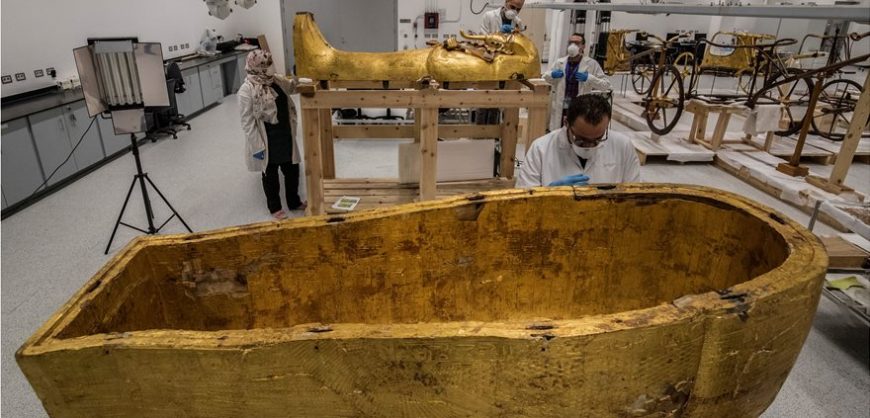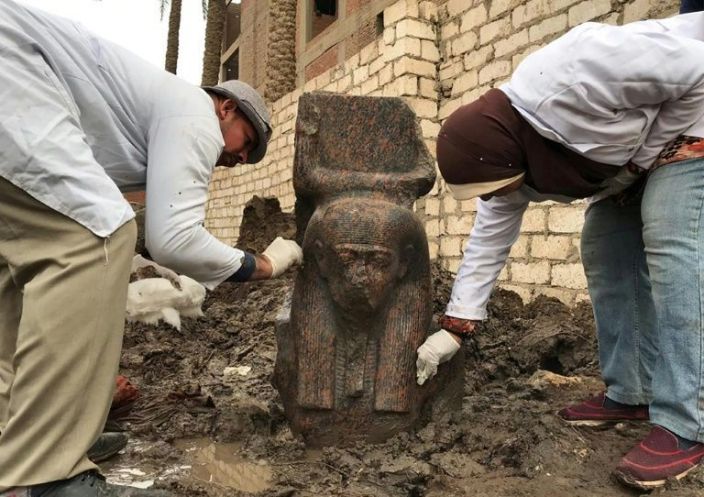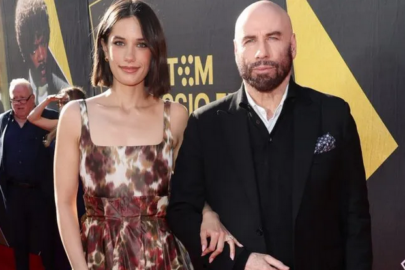The outermost coffin that once held the body of King Tutankhamun had never left the 3,300-year-old tomb since the time he was first laid to rest. Even after archaeologist Howard Carter discovered the tomb in 1922, the wooden coffin remained in the Valley of the Kings — until now.
Earlier this year, the Getty Conservation Institute and the Egyptian Ministry of Antiquities finished a nearly 10-year-long restoration of Tut’s tomb. Now, wrote The Los Angeles Times, they’ll restore his outer coffin, removing it from its resting place and allowing experts to finally get a good look.
The intricate project is largely motivated by the impending opening of the Grand Egyptian Museum in 2020, which will overlook the Pyramids of Giza.
The outermost coffin is the largest of three concentric coffins inside which King Tut’s mummy was found. While the inner two coffins have already been on display at the Egyptian Museum in Cairo, the third coffin will finally rejoin them for an exhibit at the new Grand Egyptian Museum when it opens.
In addition to the three coffins that house Tut’s body, this exhibit will also showcase the numerous relics discovered in his tomb. The innermost coffin is made of solid gold, while the outer two coffins are crafted in wood and covered in gold, along with several semiprecious stones.
Carter’s original discovery of Tut’s resting place in the Valley of the Kings was the first time that a royal tomb from the time of ancient Egypt had been discovered so remarkably intact. It contained a plethora of stunning royal treasures as well, such as a dagger made from meteorite.
Discovering the tomb of the last Byzantine Emperor Constantine XI Paleologos’ decendent (photo)
Two of the three coffins were later transported to the Egyptian Museum in Cairo while the outer coffin was left in the king’s tomb. Only in July, 97 years later, was the casket removed under intense security in order for it to be fumigated for three weeks.
With careful yet thorough restoration now underway, experts have had the rare opportunity to inspect the outer coffin up close and reveal photos for all to see.
Read more: All That’s Interesting







































